Abstract
Measurements of bacterial secondary production were carried out during 13 diel studies at one coastal marine station and in five lakes differing with respect to nutrient concentration and primary production. Bacterial secondary production was measured in situ every 3 to 5 h by [3H]thymidine incorporation into DNA. In some of the diel studies, these results were compared with results obtained from dark 14CO2 uptake and frequency of dividing cells. Only minor diel changes were observed. The rate of [3H]thymidine incorporation into DNA and the frequency of dividing cells varied from 23 to 194% of the diel mean. The dark CO2 uptake rate varied from 12 to 259% of the diel mean. An analysis of variance demonstrated that no specific time periods during 24 h showed significantly different production rates, supporting the idea that bacterial activities in natural assemblages are controlled by a variety of events. The best correction (r2 = 0.74) was obtained between the [3H]thymidine incorporation and frequency of dividing cells procedures from the lake water samples. The actual production rates calculated by [3H]thymidine incorporation into DNA were appreciably lower than those obtained by the frequency of dividing cells and the dark CO2 uptake techniques. Diel rates of bacterial production are discussed in relation to sampling frequency, statistical errors, and choice of method.
Full text
PDF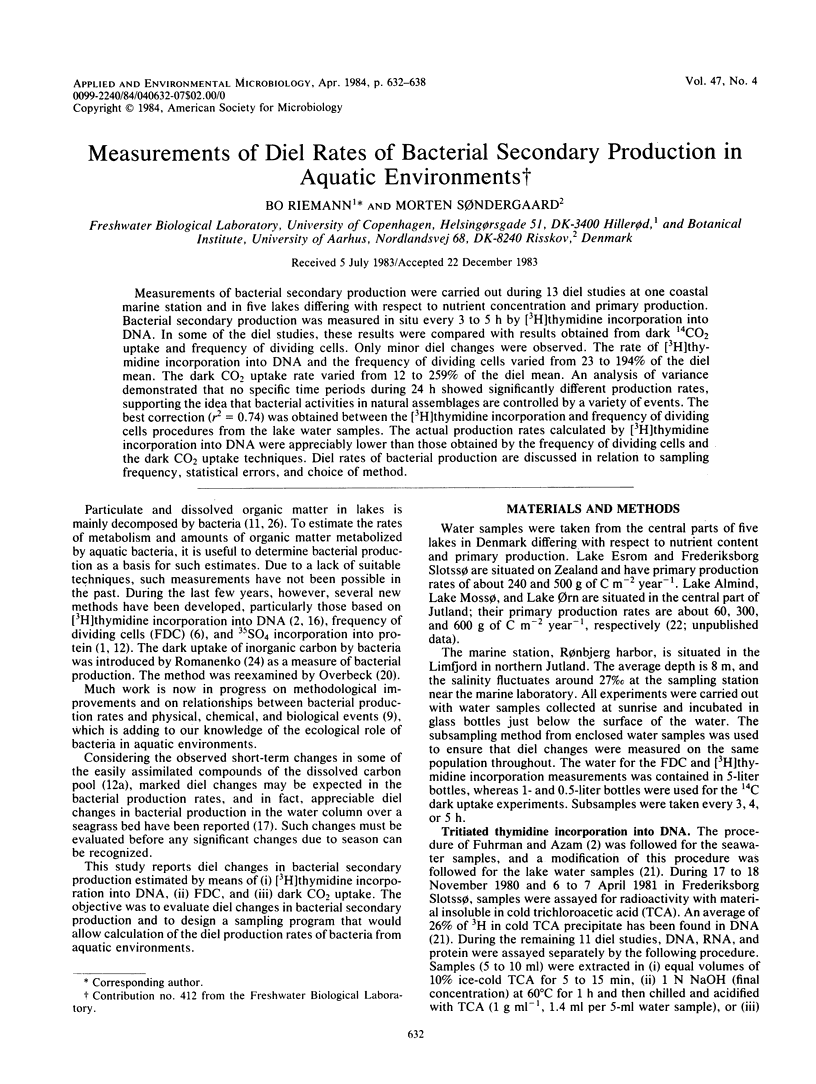

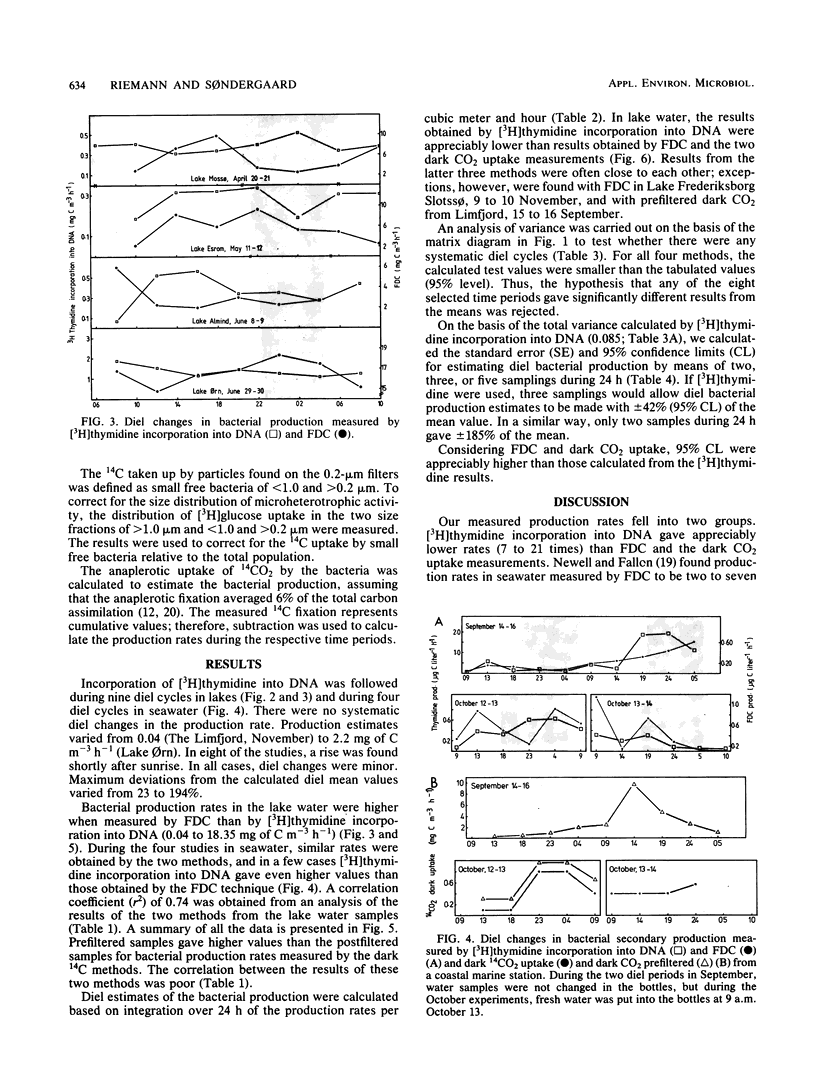
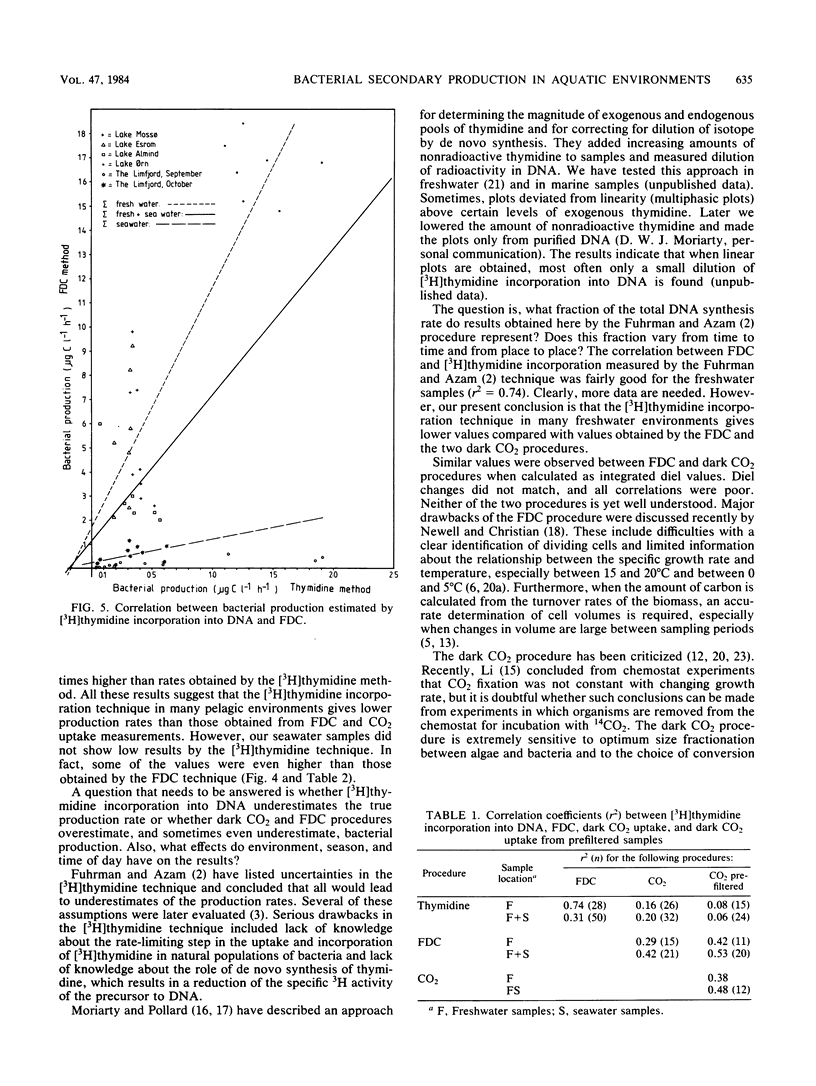
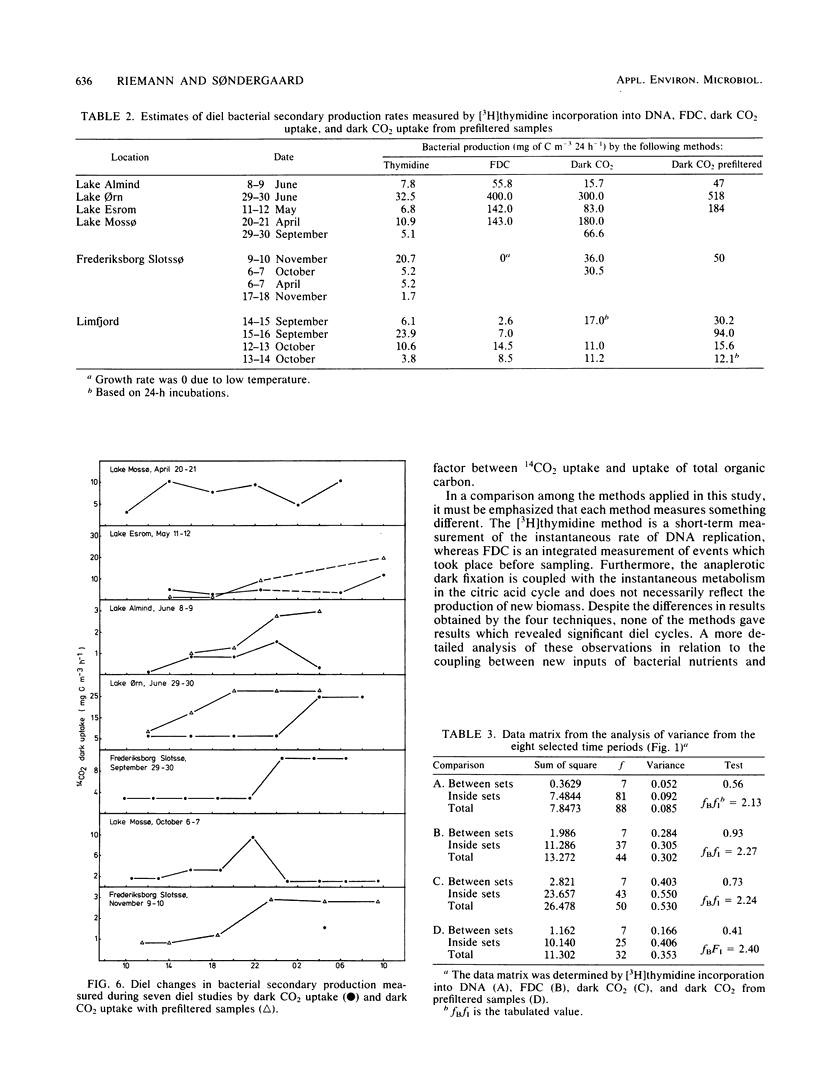
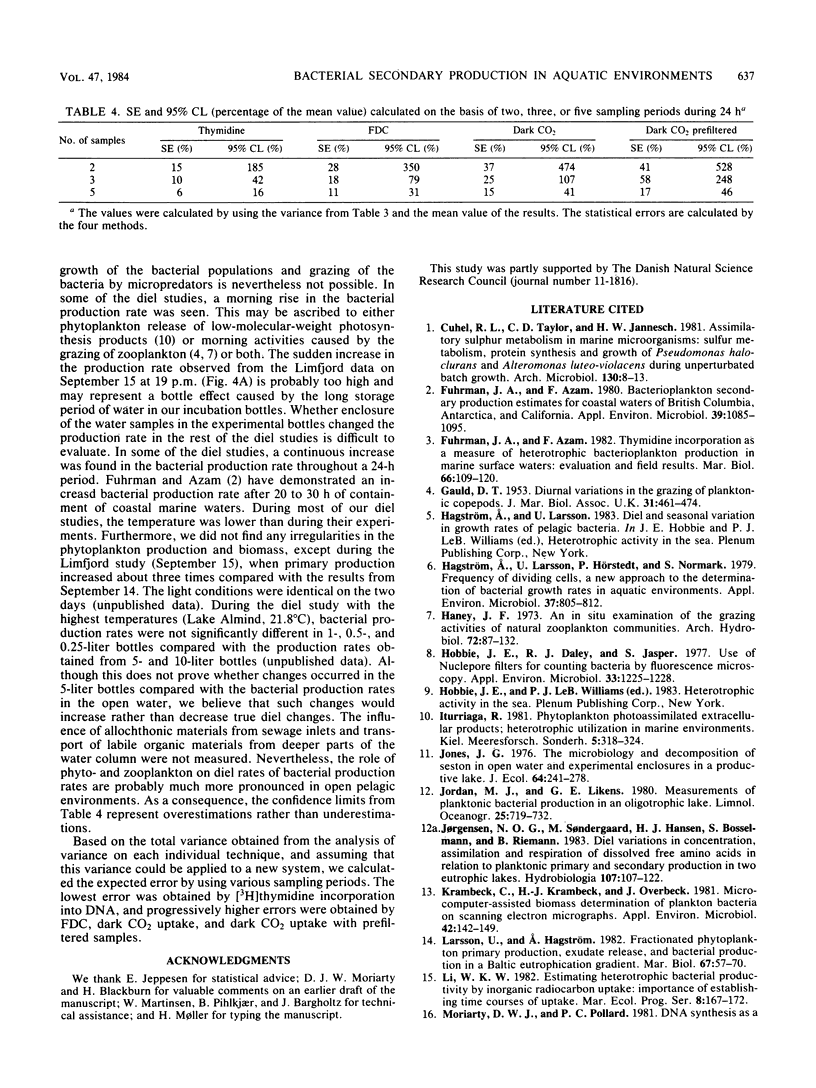
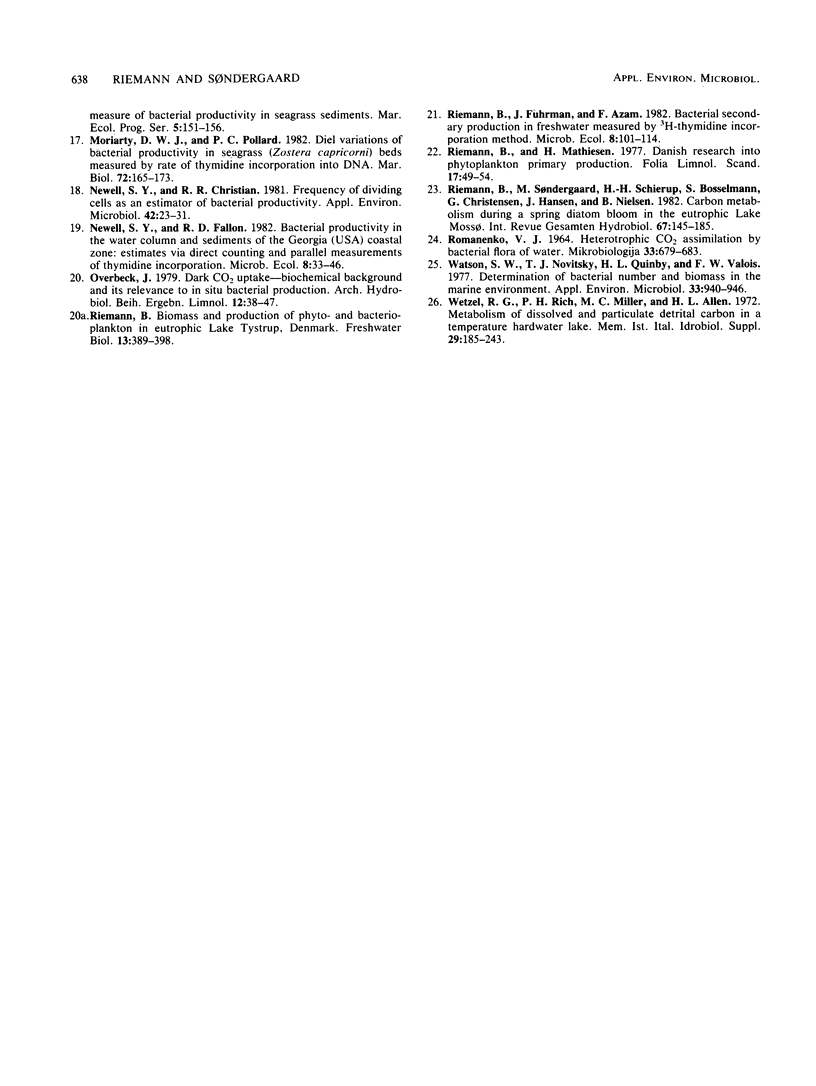
Selected References
These references are in PubMed. This may not be the complete list of references from this article.
- Fuhrman J. A., Azam F. Bacterioplankton secondary production estimates for coastal waters of british columbia, antarctica, and california. Appl Environ Microbiol. 1980 Jun;39(6):1085–1095. doi: 10.1128/aem.39.6.1085-1095.1980. [DOI] [PMC free article] [PubMed] [Google Scholar]
- Hagström A., Larsson U., Hörstedt P., Normark S. Frequency of dividing cells, a new approach to the determination of bacterial growth rates in aquatic environments. Appl Environ Microbiol. 1979 May;37(5):805–812. doi: 10.1128/aem.37.5.805-812.1979. [DOI] [PMC free article] [PubMed] [Google Scholar]
- Hobbie J. E., Daley R. J., Jasper S. Use of nuclepore filters for counting bacteria by fluorescence microscopy. Appl Environ Microbiol. 1977 May;33(5):1225–1228. doi: 10.1128/aem.33.5.1225-1228.1977. [DOI] [PMC free article] [PubMed] [Google Scholar]
- Krambeck C., Krambeck H. J., Overbeck J. Microcomputer-assisted biomass determination of plankton bacteria on scanning electron micrographs. Appl Environ Microbiol. 1981 Jul;42(1):142–149. doi: 10.1128/aem.42.1.142-149.1981. [DOI] [PMC free article] [PubMed] [Google Scholar]
- Newell S. Y., Christian R. R. Frequency of dividing cells as an estimator of bacterial productivity. Appl Environ Microbiol. 1981 Jul;42(1):23–31. doi: 10.1128/aem.42.1.23-31.1981. [DOI] [PMC free article] [PubMed] [Google Scholar]
- ROMANENKO V. I. GETEROTROFNAIA ASSIMILIATSIIA CO-2 BAKTERIAL'NO I FLORO I VODY. Mikrobiologiia. 1964 Jul-Aug;33:679–683. [PubMed] [Google Scholar]
- Watson S. W., Novitsky T. J., Quinby H. L., Valois F. W. Determination of bacterial number and biomass in the marine environment. Appl Environ Microbiol. 1977 Apr;33(4):940–946. doi: 10.1128/aem.33.4.940-946.1977. [DOI] [PMC free article] [PubMed] [Google Scholar]


